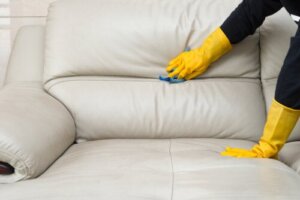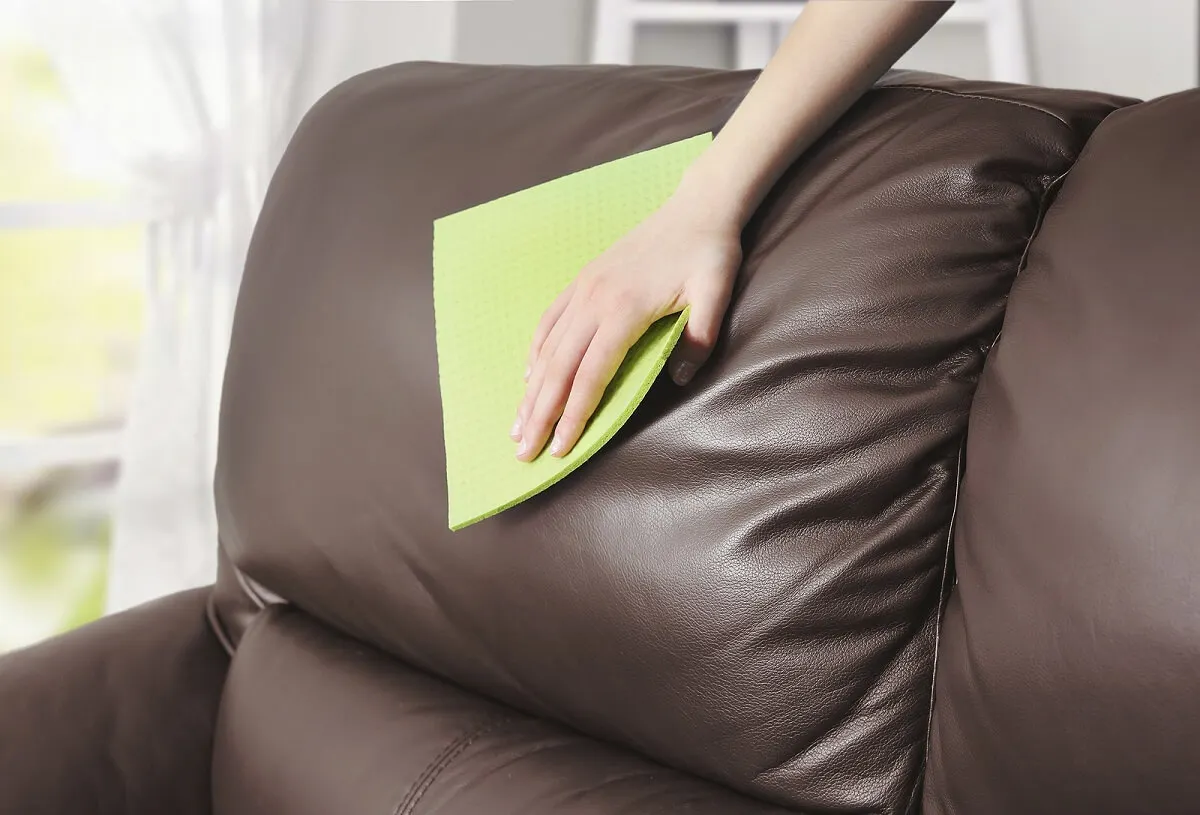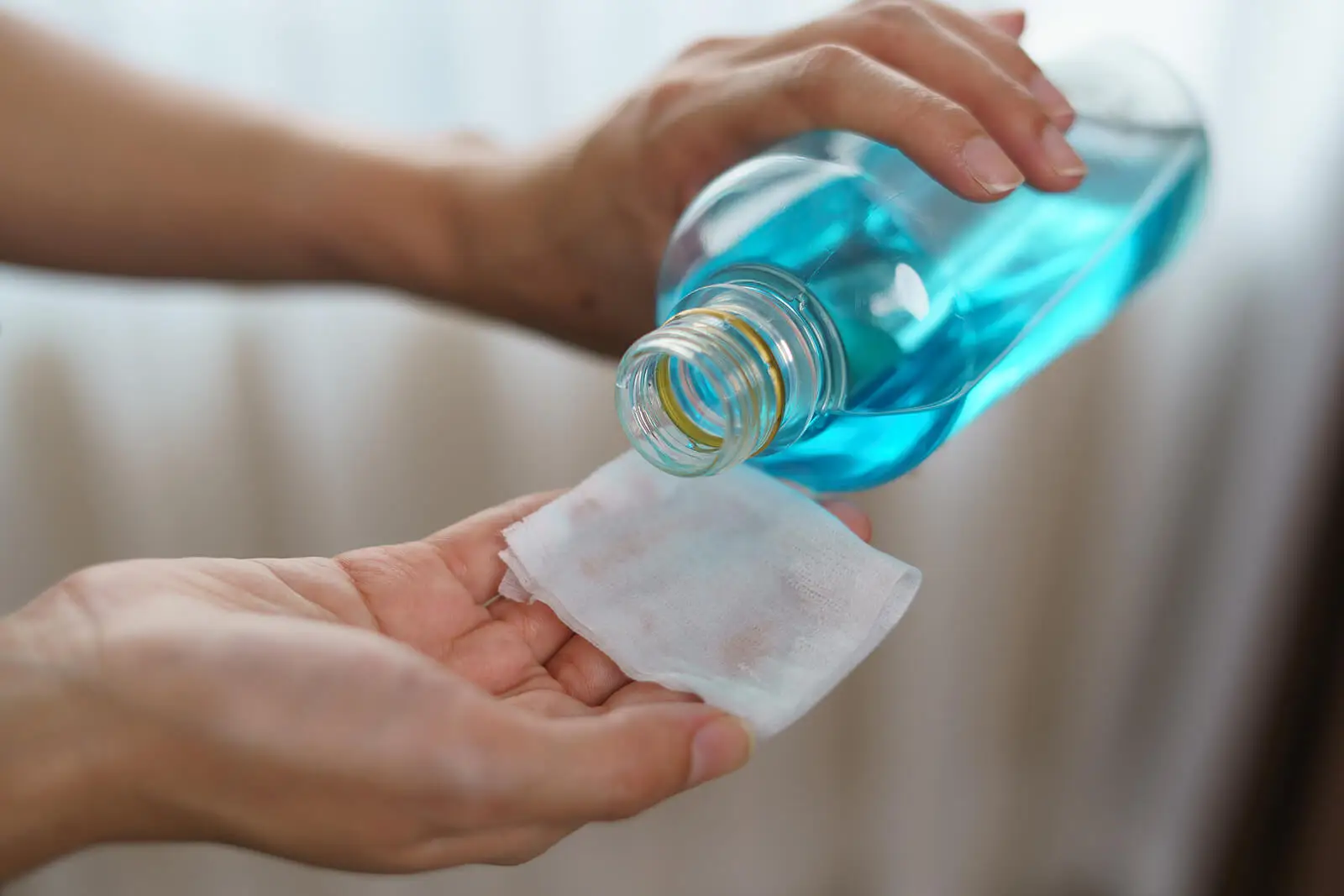Tips for Maintaining a Leatherette Sofa

Patent leather is a synthetic material made to simulate natural leather. Of course, it does not involve any animal, since it’s composed of synthetic fibers, such as polyester or polyvinyl chloride (PVC). Numerous objects are upholstered and covered with this element. With just a few tips, it’s possible to effectively maintain a leatherette sofa.
This is a material with many advantages, including easy care. Whether for daily cleaning or specific stains, the maintenance of a leatherette sofa requires only a cloth and warm water. On the other hand, chemicals and direct exposure to sunlight should be avoided.
What is leatherette?
Leatherette, also known as artificial leather, leather touch, or escape, is a synthetic material made from different fibers and polymers. Its purpose is to imitate natural leather, so it is widely used for upholstery and haute couture. Thus, it can be found in car seats, clothing, and home furniture upholstery.
Among its main advantages is the cost, since it is a synthetic material that does not require any type of animal exploitation. The manufacture of leatherette is usually much cheaper than the processing of natural leather. Therefore, chairs and sofas covered with this material are much more affordable.
Although there are different levels of quality, in general, leatherette is an excellent imitation of natural leather. Some are difficult to distinguish from the original leather. They are very easy to care for and have good resistance to abrasion, scuffs, scratches, and other damage from everyday use.
Different finishes of leatherette
Synthetic leather is manufactured as an imitation of natural leather, so there are different variations:
- Stretch leatherette: This is used for tight-fitting garments, such as tights and leggings.
- Animal print: Animal print is widely applied in different areas of fashion. Therefore, there are variants of leatherette that seek to imitate this trend.
- Metallic: This is a style that seeks to simulate metallic gray tones for modern settings.

How to maintain a leatherette sofa
One of the areas where synthetic leather is most commonly used is in the manufacture of home furnishings. Thus, leatherette can be found in the upholstery of chairs, armchairs, and sofas.
In addition to being economical, it is easy to care for. This can be done with a series of easy-to-follow tips.
We think you may be interested in reading this, too: 31 Recommendations to Prevent Allergies in Your Home
Quality matters
Although it is a material that imitates natural leather, the quality of the leather should not be neglected. Lower-quality leatherette tends to crack faster and its durability is reduced.
Act quickly for the maintenance of a leatherette sofa
A fundamental aspect in the care of this upholstery is to hurry when a complex stain is generated. If they are removed instantly, there’s almost no difficulty with leatherette cleaning. However, when they penetrate deeper into the materials, they can be difficult to remove.
Cloth and water
The key to maintaining a leatherette sofa is to work with the two most basic elements of cleaning: warm water and a cloth. In general, by rubbing a damp cloth across the surface it is possible to remove any stains from this upholstery, as long as they are addressed quickly.
Taking care of the shine
The most important strategy for maintaining the shine is to avoid chemicals on the leatherette surface. Although functional for other instances of sanitizing, turpentine, alcohol, all-purpose degreasers and bleach should be kept away from this upholstery.
Of course, the shine is maintained if, in addition, frequent cleaning is executed and stains are removed promptly.
Other leatherette furniture and specific stains
Cleaning procedures are similar on any leatherette upholstery- whether on sofas, chairs, or bicycle and car seats.
On the other hand, there is a set of complex stains for which a little alcohol should be used. These are those produced from tomato, soda, chocolate, and ink.
If they became complex to remove, either by the passage of time or by the depth of the stain, the procedure is to place a cotton swab dipped in alcohol. However, it must be just soaked and the support on the surface must be soft, without rubbing vigorously. When finished, dry with a cloth immediately.
Other less corrosive products that can be applied for complex stains are cleansing milk, neutral soap, clay stone, and white vinegar. Always carefully mix with warm water and remove the remains with a dry cloth.
What about leather sofas?
Natural leather sofas have a similar cleaning process to leatherette sofas. Therefore, their maintenance and durability are achieved by keeping them away from the sun’s rays, removing dust frequently, and removing stains with a damp cloth.
However, there are differences in terms of shine. Maintaining this condition requires the application of special creams from time to time, which nourish and moisturize the surface.

Enemies in the maintenance of a leatherette sofa
There are two fundamental aspects that must be avoided to extend the useful life of a sofa with synthetic leather. On the one hand, attention should be paid to sunlight, since it is not advisable for it to have a direct impact on the material.
UV rays dry out the fibers, which causes the leatherette to lose elasticity. Therefore, the position of the sofa should be kept away from the sun’s rays.
The other aspect to avoid is excess humidity, a condition that accelerates its deterioration. This is because it enhances the decomposition of the material and gives it a worn appearance.
It may seem contradictory that its cleaning should be done with a damp cloth, so it’s important to rub it with a dry cloth as well. The aim is to remove the remains of moisture at the end of the process.
Like this article? You may also like to read: Decorating Your Home in Autumn: What to Keep in Mind
Maintenance of a damaged leatherette sofa
Although we may take care of the furniture with all the recommendations, it’s possible that wear and tear and the passage of time cause damage to it. In that case, there are some effective products to repair a leatherette sofa. For example, patches.
This is an article that adheres to the furniture and is very effective to cover holes or stains. For deeper tears, there’s a leather paste that can fill the area. There’s also repair dye, which works to restore color and shine.
All cited sources were thoroughly reviewed by our team to ensure their quality, reliability, currency, and validity. The bibliography of this article was considered reliable and of academic or scientific accuracy.
- Arboleda, Ana M. , Alonso, Julio C. , El aroma al evaluar el involucramiento del consumidor con un producto y su percepción de calidad. Estudios Gerenciales [Internet]. 2015;31(137):403-410. Recuperado de: https://www.redalyc.org/articulo.oa?id=21243557006
- Hijosa, C. “El Cuero Natural Y Sostenible Producido Con La Fibras De Las Hojas De Pina En Filipinas.” Ananas Anam 1Hijosa, C (2016): 1–3. Ananas Anam. Web. Disponible en: http://www.ideassonline.org/public/pdf/NaturalLeather-ESP.pdf
- Chaves Badilla, Salomón Isaac, El cuero como soporte alternativo para realizar planchas de huecograbado. El Artista [Internet]. 2011; (8):48-68. Recuperado de: https://www.redalyc.org/articulo.oa?id=87420931004
This text is provided for informational purposes only and does not replace consultation with a professional. If in doubt, consult your specialist.








